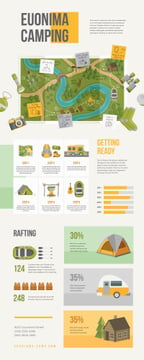If you camp consistently in areas with rocks or sharp downed branches or simply hate packing away a wet, muddy outdoor tents, then an impact is certainly worth thinking about. Footprints are likewise fairly cost-effective compared to a new camping tent.
What kind of heater is safe to use in a tent?
Many camping tent producers supply their very own particular impacts, which are reduced to the exact size of the outdoor tents floor. Nevertheless, you can make one on your own with a lightweight textile like polycryo or tyvek.
Weather Conditions
Whether you need an impact truly depends on the problems you'll be camping in. If you're backpacking in a location where the ground is generally wet (it's basically inevitable), an outdoor tents footprint can be a useful addition to your kit, as it will certainly stop your outdoor tents floor from coming to be soggy.
Nonetheless, if the footprint is also big it can work as a wetness trap and possibly allow water to swimming pool under your camping tent. This can be prevented by making certain the impact is cut a little bit smaller sized than your outdoor tents on all sides.
Usually talking, it's ideal to obtain an impact from the very same supplier as your outdoor tents to make sure a precise fit. They additionally have a tendency to be made from thicker, much more resilient materials than DIY choices. They can be pricey for something whose single objective is to protect the ground underneath your tent, however it can be a beneficial investment if you appreciate the durability of your gear.
Terrain
Several high quality tents can function well without a footprint, especially those that have bathtub floorings made from resilient products. Nonetheless, the terrain you hike on can have a significant impact on just how swiftly your camping tent floor wears out. Granite slabs, sandstone and other sturdy surface areas wear through all-time low of your outdoor tents faster than grassy meadows or woodland floors.
A footprint or ground cloth helps prolong the life of your camping tent by serving as an obstacle between the ground and the sewn-in groundsheet of your outdoor tents, says REI elderly sales professional Elizabeth Nguyen. It likewise shields the tent from unpleasant elements like sharp branches and jagged rocks that can pierce or tear the sewn-in flooring. When choosing a footprint for your camping tent, it is essential to guarantee it's a little smaller than the camping tent on all sides. This prevents water from merging between the camping tent and footprint during a rainstorm, which could seep into your tent. The best alternative for an impact is to buy one developed for your specific tent, which will assure a snug fit.
Tents with Lower Deniers and Waterproof Rankings
Whether you're a laid-back backpacker or a hardcore adventurer, the toughness degree of your camping tent is an essential factor to consider. Camping tents designed to be ultralight, bordering on minimalist, commonly compromise some level of resilience in the textile and materials used.
One fabric specification you'll experience is denier, which describes the weight in grams of a 9,000-meter size of thread that makes up the camping tent's canopy, rainfly, and/or flooring. A higher denier spec symbolizes much more tough materials, while reduced numbers show lighter and less resilient textiles.
Various other specs to take a look at consist of floor dimensions, vestibule size, and indoor pockets. The previous shows the overall square-footage that can be used for comfortable area, while the latter can contribute in storage space by providing an area to stow away equipment overnight and house tents in bad weather condition. Air flow is additionally an important factor; as you exhale dampness during rest, it needs to get away, or condensation may develop within. Functions such as mesh windows and panels and flexible rainfly doors aid enhance air flow and stop this from occurring.
The Expense
The expense of a tent can affect its performance, and it is also vital to think about how much you can manage to spend. Backpackers looking for a lightweight sanctuary ought to aim for an outdoor tents with a livability score of at the very least two celebrities, and ideally, three or even more.
Livability refers to just how roomy a camping tent feels, with clearance and floor measurements playing a big function. Historically, backpacking camping tents made use of considerably sloped walls and very little space to conserve weight, however modern-day products enable designers to offer even more convenience while keeping weight reduced.
Storage space is an additional factor to consider, with vestibules and a quick-pitching design helping reduce configuration time. In addition, the kind of material layer and just how the outdoor tents is saved can affect long life. As an example, a PU finishing that breaks down more quickly when damp, or is subject to duplicated cycles of stowing and un-stowing, can considerably reduce the life-span of a camping tent. Likewise, making use of a customized impact as opposed to stuffing a camping tent in a careless fashion will certainly likewise expand its lifespan.
Which information is a must have when camping?
